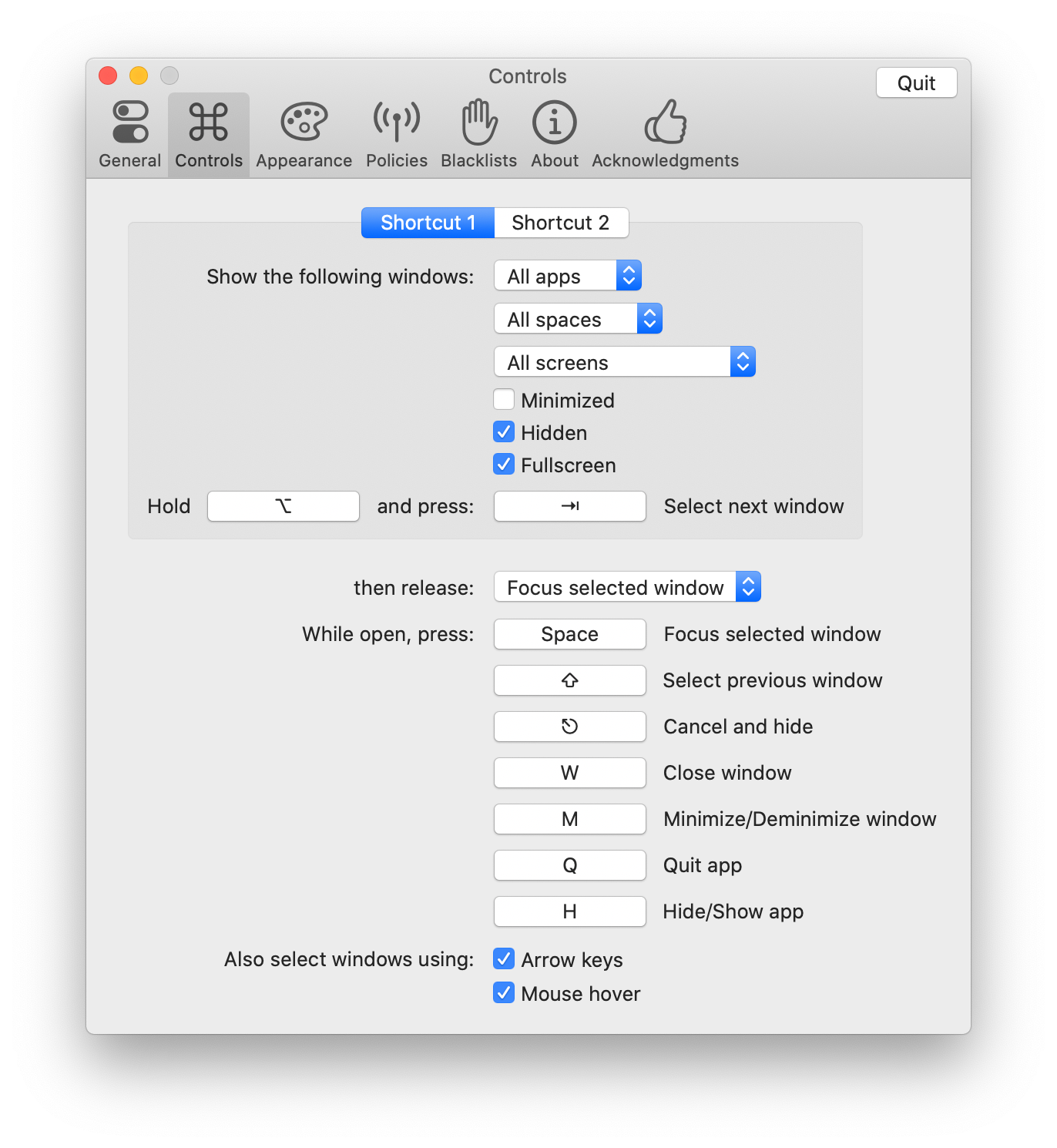
#Alt tab mac windows
The first retail release, originally slated for release in April 1984, Windows 1.01, was instead released on November 20, 1985. Only by a little bit of time in some regards for Windows 1.0 Microsoft first presented it to the public on November 10, 1983. When program has multiple windows - opens the Taskbar Live Preview When program has one window on top - shows the minimizing animation and minimizes the window when has one window not in focus - brings the window on top when program has one window minimized - shows the unminimizing animation and brings the window on top when no instance of the program is running - shows the launching program animation and launches the program and brings the window on top
#Alt tab mac windows 7
Then Windows 7 started hiding the labels and made the Taskbar into a combined program launcher/window switcher, which now made the behavior of clicking on the icon itself very inconsistent, depending on the state of the program: The Windows 95 taskbar originally showed one entry per Window, until Windows XP started grouping Windows together when the Taskbar gets too crowded. The Windows Taskbar was built on that, but has since diverged quite a bit from that model. Yet Microsoft seems to be walking away from this model. These differences led Microsoft to adopt an OS-level unified window history model. > Windows launched after the Mac, into an era of slightly more powerful processors and better understanding of user behavior on truly multi-application devices. There's no need to tell some story about how the Macintosh was created during a more primitive era of computing history, because that story has no explanatory power.

#Alt tab mac mac
The Mac puts its menu bar at the top of the screen, Windows puts it inside each window. That's all that you need in terms of explanation. So there is no need for "foreground application", only foreground window. Windows places the menu bar inside each window. This is a perfectly reasonable justification for having a foreground application. This is a reasonable place to put a menu bar, because it is easy to click on things which are at the edge or (better yet) corner of the screen. The Macintosh has a menu bar at the top of the screen which belongs to the foreground application. This is a nice story, but reading on it seems like you're saying that the way app switching works on Windows as the Obvious and Correct thing to do, and that the Macintosh way of doing things is nothing more than a choice that was made too long ago to change. > The difference is largely a historical artifact of the Macintosh operating system not originally supporting "multitasking." The more time you spend in one ecosystem, the more natural its approach feels to you, because you adapt to your environment over time. Apple undoubtedly discussed the idea, but even by the time Windows launched Mac users were fully accustomed to the Mac's windowing model and would have complained mightily at the conceptual switch had it been attempted then or at any other point in time. Windows launched after the Mac, into an era of slightly more powerful processors and better understanding of user behavior on truly multi-application devices. All of this meant there was no OS-level concept of "the window stack" there was only an app-level concept of window history, and a separate OS-level concept of app history. Then the concept of a "switcher" was invented, which gave you the sense that the Mac was running multiple applications because it could do app-to-app context switching behind the scenes to make it feel like you were running multiple applications simultaneously. If you wanted to switch between a spreadsheet and a word processor you had to close one application and open the other. The difference is largely a historical artifact of the Macintosh operating system not originally supporting "multitasking." When the Mac first came out, it could only run one application at a time. OSX users generally can't imagine not knowing what apps their windows are associated with, and Windows users generally can't imagine being expected to care what apps their windows are associated with. Repeated Alt-Tab's take you back through your most recently used windows, regardless of the Apps involved. Windows is window-centric rather than app-centric, with a unified window stack so a single keystroke (Alt-Tab) always takes you to the previous window, regardless of what app is responsible for that window. MacOS is app-centric, so you have a keystroke to switch between apps and a keystroke to switch through the windows of the app.
#Alt tab mac for mac
For Mac users asking "how is this different from the keystrokes I already have", this app is designed to give you Windows-style switching which is subtlety but fundamentally different from OSX-style window switching.


 0 kommentar(er)
0 kommentar(er)
